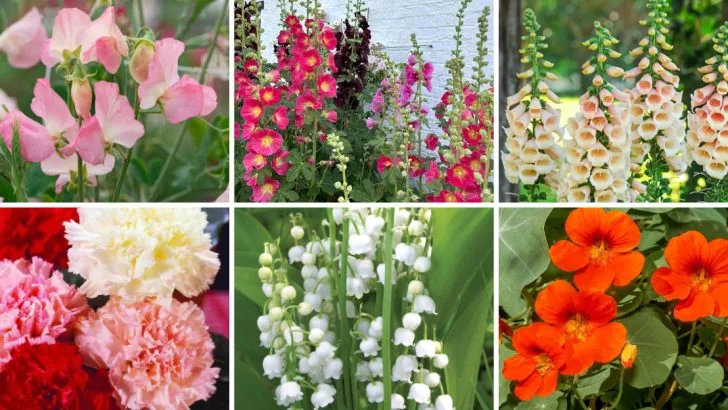Some flowers feel like they’ve been pushed aside in favor of trendier, low-maintenance plants or whatever happens to be going viral on garden blogs. But the ones your grandparents or great-grandparents grew? A lot of them had real charm—and staying power.
These old-fashioned blooms weren’t just pretty; they had personality. They scented the air, attracted pollinators, and added color without trying too hard. If your garden or balcony could use a little nostalgia—or you just want something with a bit more soul—these 14 classic flowers are well worth bringing back.
Sweet Pea

With their sweet fragrance and delicate blooms, sweet peas are a gardener’s delight. These charming climbers, available in a spectrum of pastel shades, can add a whimsical touch to any garden. Picture a trellis adorned with clusters of pink, lavender, and white flowers, their scent wafting gently in the breeze. Sweet peas thrive in cooler climates, making them perfect for spring planting. Historically, these blooms were a favorite in Victorian gardens, where they symbolized blissful pleasure. To maintain their allure, regularly deadhead the flowers to encourage more blooms throughout the season.
Hollyhock
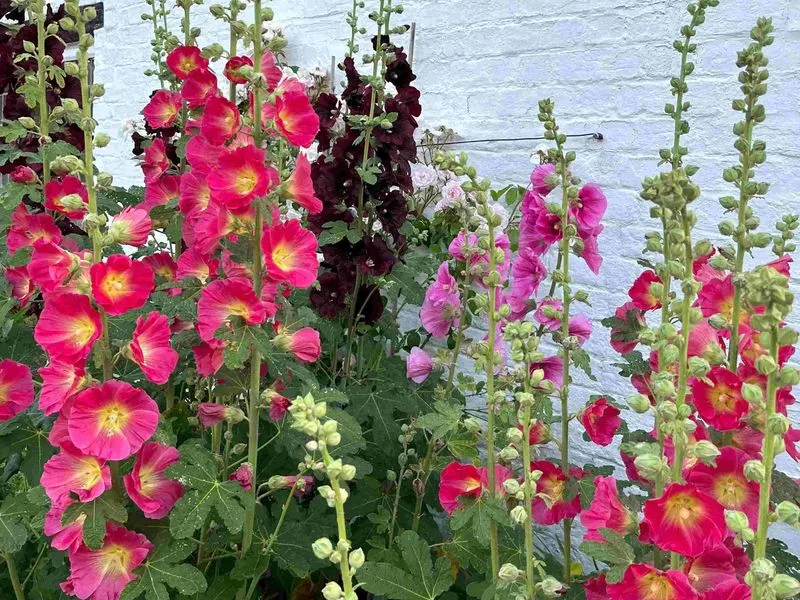
Hollyhocks bring a touch of cottage charm to any garden with their towering spikes of vibrant flowers. These biennials, often found gracing the edges of old English gardens, are known for their resilience and striking presence. Their tall stalks, festooned with blooms, can reach impressive heights, creating a natural screen or backdrop. Hollyhocks prefer sunny spots and well-drained soil to flourish. Their impressive height and cheerful colors make them a favorite for gardeners looking to add vertical interest. Plus, they attract butterflies, adding life and movement to your garden.
Foxglove
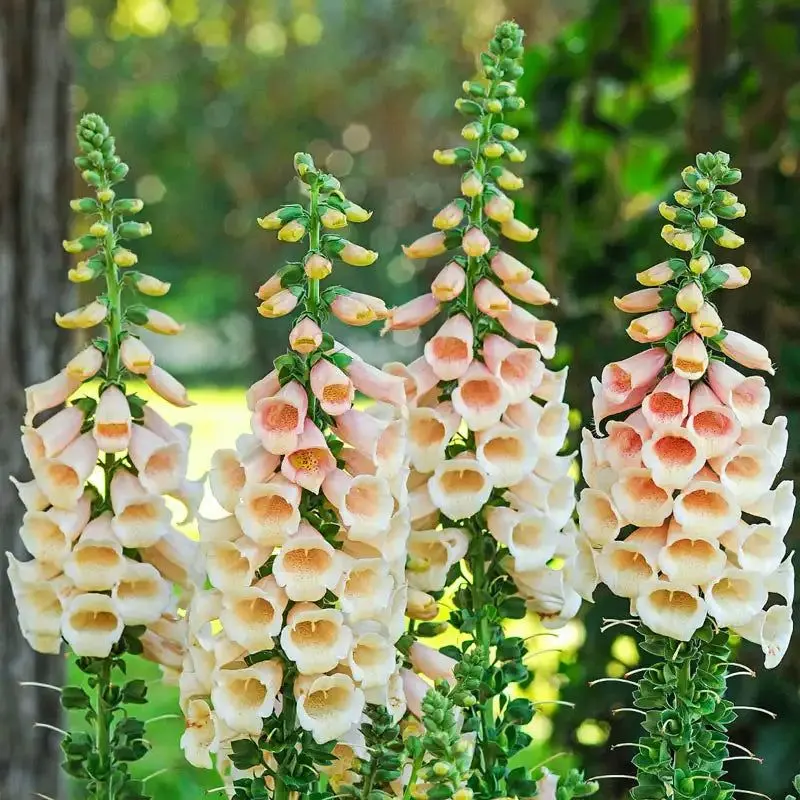
Foxgloves, with their elegant, tubular blooms, add a touch of magic to any garden. These stately plants are reminiscent of fairy tales, often seen in woodland settings. Their flowers, arranged in tall spikes, range from soft pinks to deep purples. Foxgloves thrive in partially shaded areas, making them ideal for woodland gardens. Historically, they were used in folk medicine, though caution is advised as all parts are toxic if ingested. Gardeners love them for their height and unique shape, which attract bees and hummingbirds. They’re perfect for adding drama and height.
Carnation
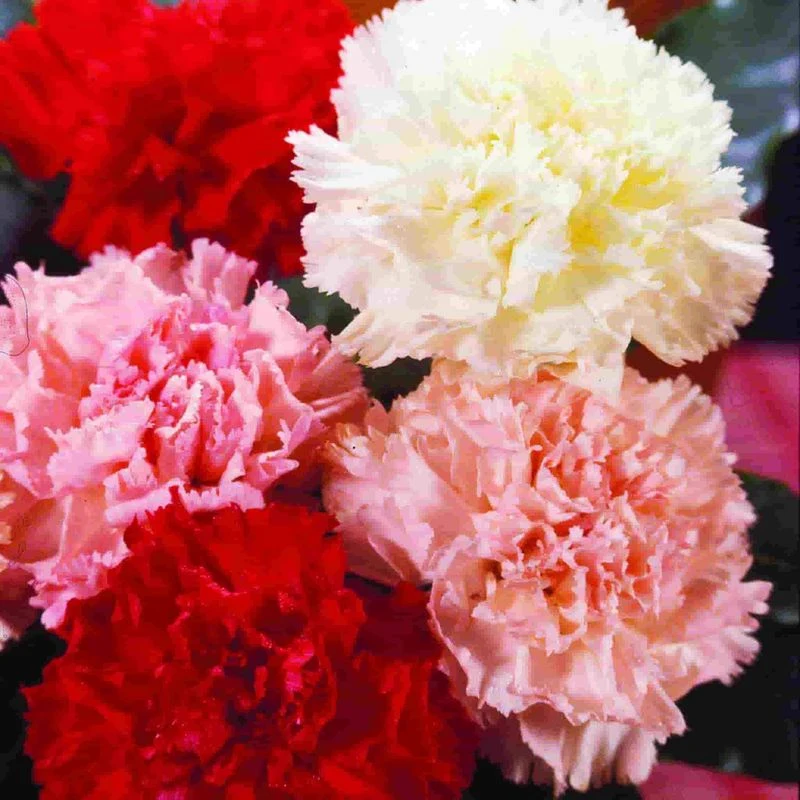
Carnations, with their frilled petals and spicy scent, have long been a favorite for bouquets and arrangements. These charming flowers come in a variety of colors, each carrying its own symbolic meaning. Pinks convey gratitude, while reds express love and admiration. Their long-lasting blooms are perfect for cutting and bring a touch of nostalgia to any floral display. Carnations prefer sunny locations and well-drained soil, making them easy to cultivate. Once a staple in classic gardens, they are making a comeback for their beauty and versatility. Ideal for borders or containers.
Lily of the Valley
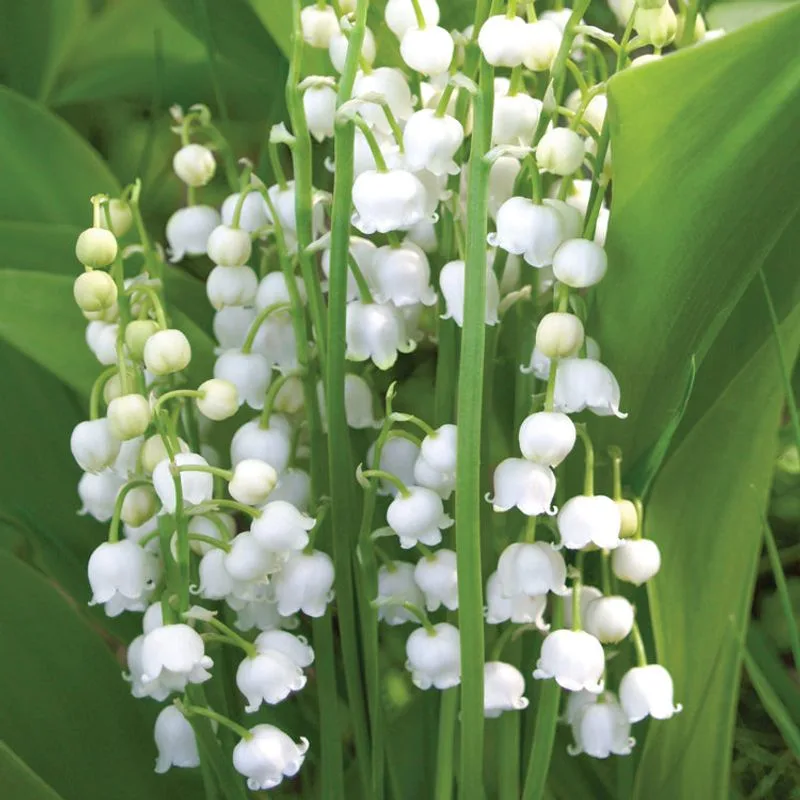
Lily of the valley, with its sweet scent and dainty bell-shaped flowers, is a symbol of purity and happiness. These perennials are perfect for shady areas, spreading gently through their rhizomes. The tiny white blooms, set against lush green foliage, create a serene and elegant ground cover. Historically associated with springtime celebrations, they are often seen in bridal bouquets. Their subtle fragrance and graceful appearance make them an enduring favorite. Ideal for woodland gardens, lily of the valley adds a touch of whimsy and romance to any landscape.
Nasturtium

Nasturtiums, with their bright, cheerful blooms and peppery-tasting leaves, are a gardener’s joy. These flowers, available in warm hues of orange, yellow, and red, offer a pop of color to any garden. Known for their edible flowers and leaves, nasturtiums are perfect for adding to salads. They thrive in poor soil and require little maintenance, making them ideal for novice gardeners. Historically, they were used for medicinal purposes and as a natural pest deterrent. Their cascading habit makes them perfect for hanging baskets or garden borders.
Bleeding Heart
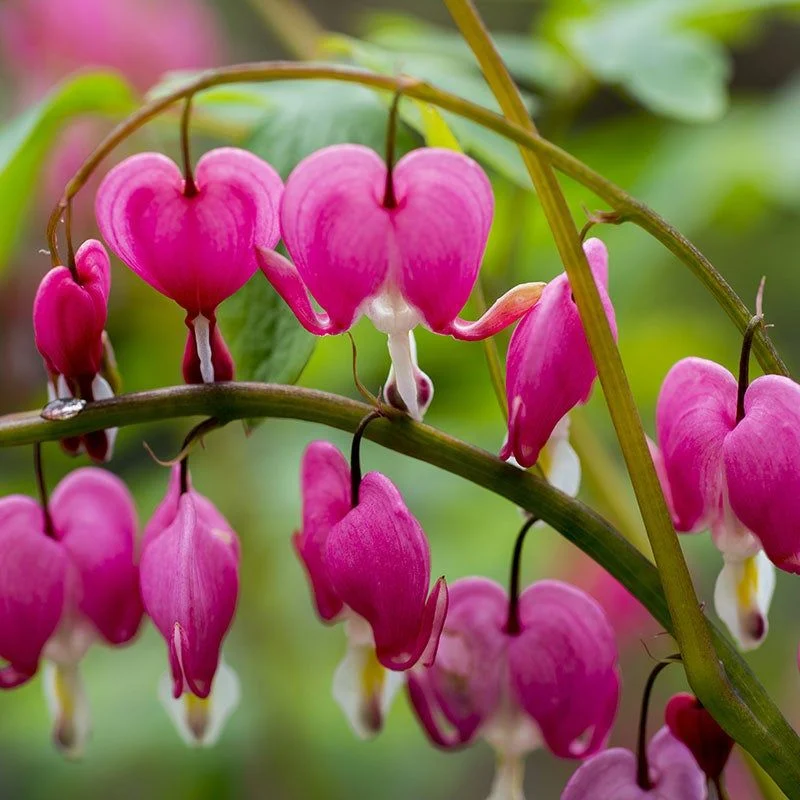
Bleeding hearts captivate with their unique heart-shaped flowers that dangle gracefully from arching stems. These perennials thrive in shaded areas, making them perfect companions for hostas and ferns. Their pink or white blooms appear in early spring, adding a touch of romance to the garden. Known for their delicate appearance, they are surprisingly hardy and easy to grow. The name ‘bleeding heart’ adds a touch of drama to their story, reminiscent of old-fashioned gardens. Plant them in rich, well-drained soil for best results, and enjoy their fleeting beauty each spring.
Zinnia
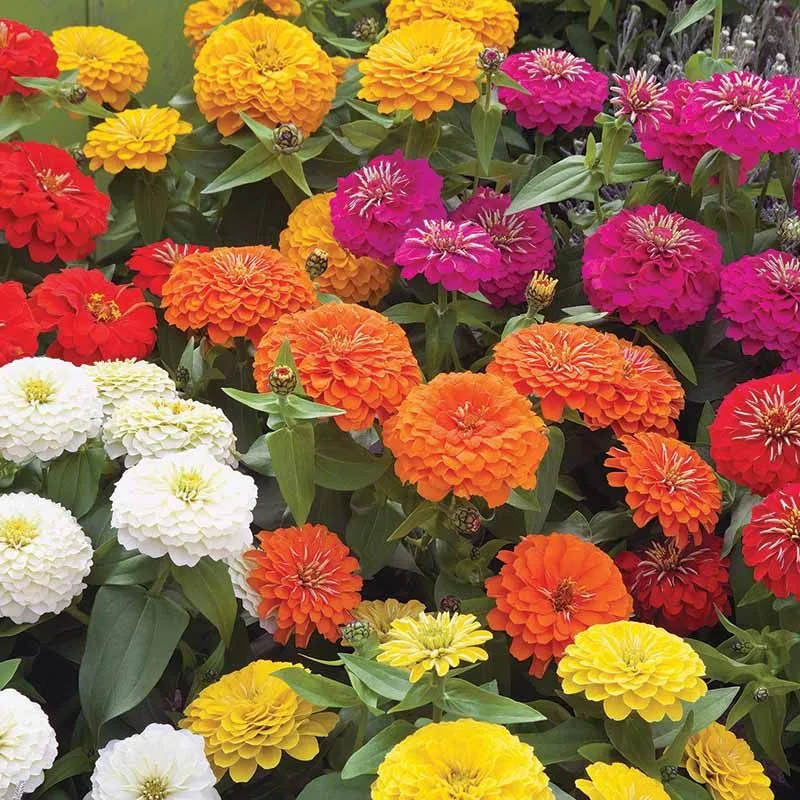
Zinnias are the life of the garden party with their vivid colors and cheerful blooms. These annuals are easy to grow and thrive in sunny spots, attracting butterflies and bees with their nectar-rich flowers. Available in a dazzling array of colors, from bright reds to sunny yellows, zinnias are perfect for adding color to borders or flower beds. They have a long blooming season, providing vibrant color from midsummer to the first frost. Once a staple in American gardens, their resilience and beauty make them a must-have for modern gardeners.
Peony
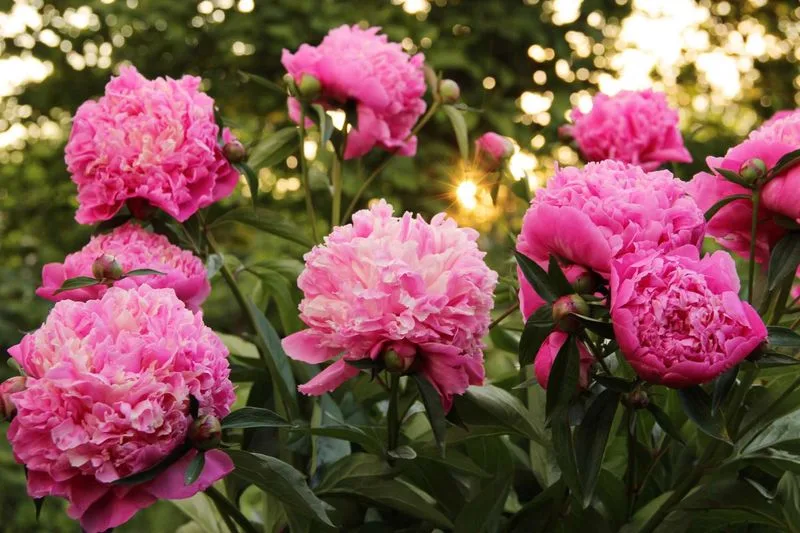
Peonies, with their lush, fragrant blooms, are the epitome of garden elegance. These perennials, known for their longevity, can thrive for decades with minimal care. Their large, showy flowers, available in shades of pink, white, and red, are often seen in bridal bouquets and floral arrangements. Peonies prefer sunny locations and well-drained soil, blooming spectacularly in late spring. Their intoxicating fragrance and luxurious appearance make them a beloved choice for gardeners seeking timeless beauty. With proper care, peonies can provide a stunning floral display year after year.
Dahlia
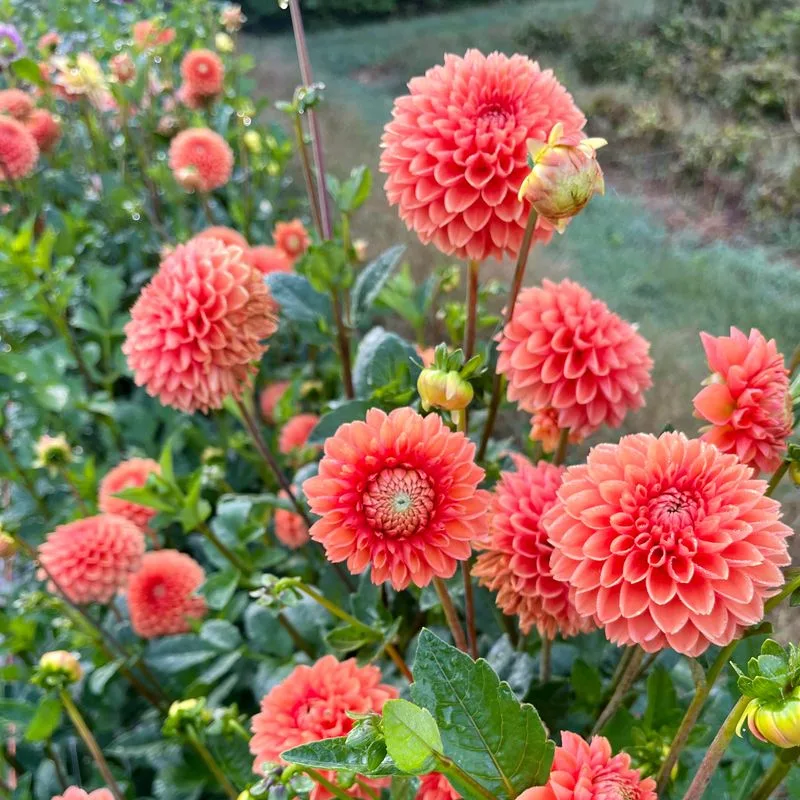
Dahlias dazzle with their intricate blooms and wide range of colors. These tuberous perennials are prized for their dramatic flowers, which come in nearly every shade imaginable. From small pom-poms to large dinner-plate blooms, dahlias add visual interest and variety to any garden. They prefer sunny spots and rich, well-drained soil to thrive. Dahlias have a rich history, originating from Mexico and embraced by Victorian gardeners. Their stunning appearance and diversity make them a favorite for cutting gardens and floral displays, offering a burst of color well into the fall.
Snapdragon

Snapdragons, with their whimsical, dragon-shaped blooms, bring a playful touch to any garden. These versatile beauties are available in a wide spectrum of colors, from soft pastels to vibrant reds and purples. They thrive in sunny locations and well-drained soil, blooming profusely from spring to fall. Snapdragons are known for their resilience, tolerating light frosts and bouncing back with new blooms. These flowers are a favorite among children, who enjoy pinching the sides of the blooms to make the ‘dragon’ snap open and shut. Perfect for borders or cutting gardens.
Cosmos
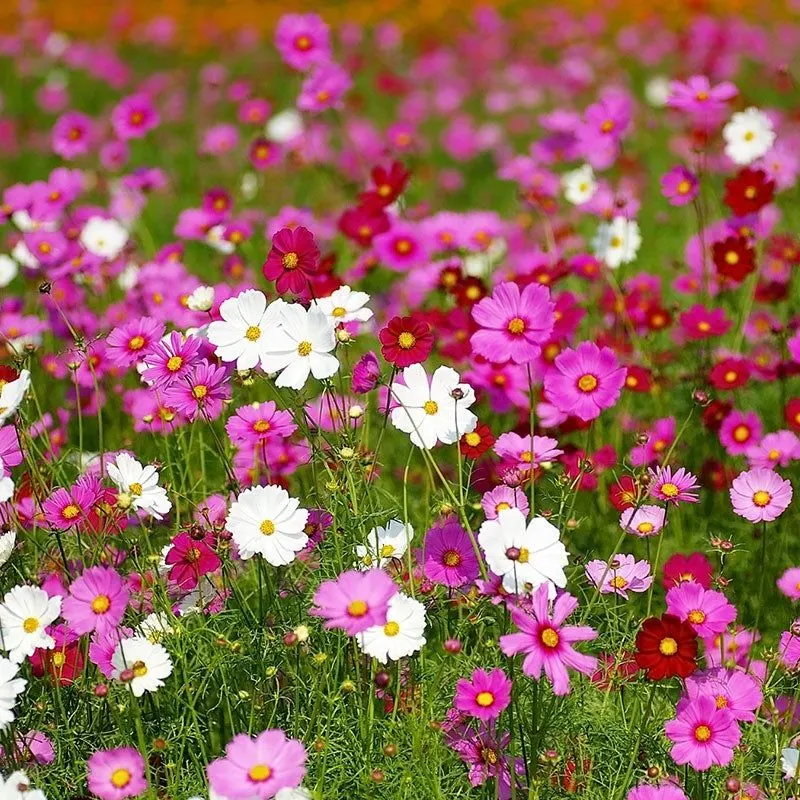
Cosmos flowers are the epitome of summer’s carefree spirit, with delicate, daisy-like blooms that dance in the breeze. These annuals are easy to grow, thriving in poor soil and full sun. Their flowers, in hues of pink, white, and purple, attract bees and butterflies, adding life and color to any garden. Cosmos have a long blooming season, making them perfect for sustaining garden interest throughout the summer. Their airy foliage and charming blooms evoke a sense of nostalgia and simplicity, reminiscent of wildflower meadows. Ideal for cottage gardens and informal settings.
Sunflower
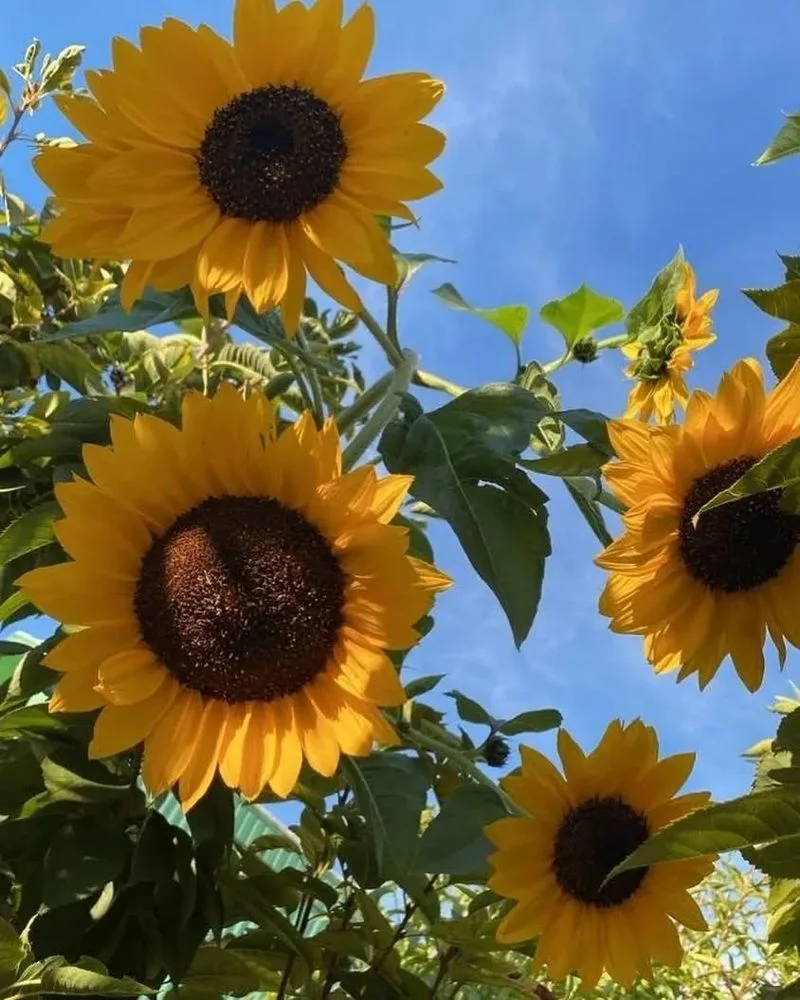
Sunflowers are the quintessential symbol of summer, with their towering stalks and radiant yellow blooms. These annuals are easy to grow and bring a sunny disposition to any garden. Sunflowers thrive in full sun and prefer well-drained soil, reaching impressive heights that make them perfect for creating natural screens or windbreaks. Their seeds attract birds, adding an element of wildlife to your garden. Historically, sunflowers were cultivated by Native Americans for their seeds and oil. Today, they continue to be a favorite for their cheerful presence and impressive stature.
Marigold
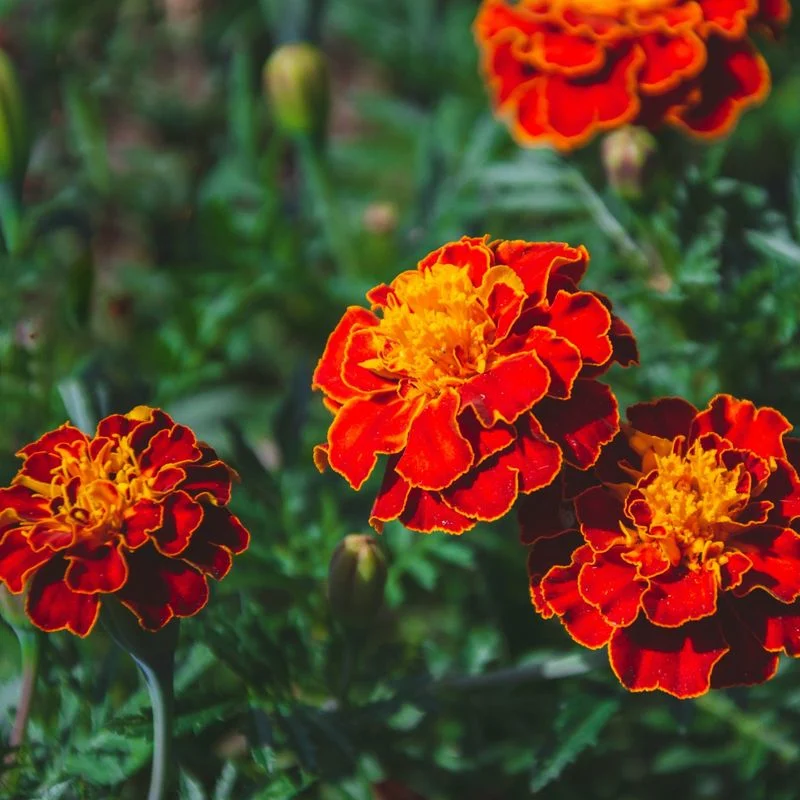
Marigolds are the unsung heroes of the garden, known for their vibrant colors and natural pest-repelling properties. These annuals are easy to grow and thrive in sunny spots with well-drained soil. Available in warm hues of orange, yellow, and red, marigolds add a splash of color to borders and containers. Their scent deters garden pests, making them a natural companion for vegetable gardens. Marigolds have been cultivated for centuries, prized for their medicinal and culinary uses. Their bright blooms and robust nature make them a gardener’s ally and ornamental staple.

